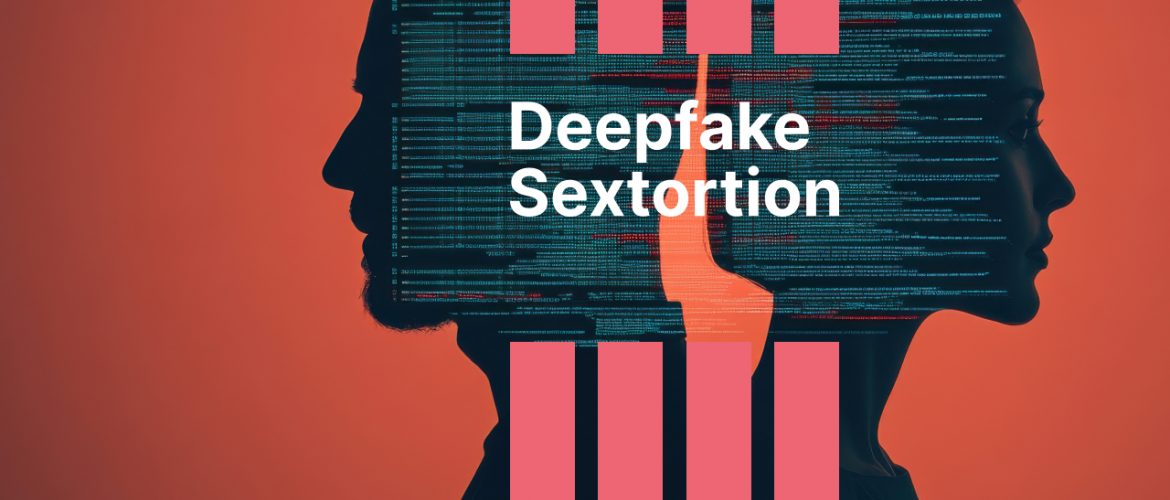Deepfake sextortion is probably the most heinous abuse category on the web in the era of AI. Your web picture can be taken, doctored, and sexualized without your knowledge, let alone your permission. That’s a horrifying trend picking up pace quickly, and getting educated on the process is the beginning of protection for you.
What is Sextortion Deepfake and Why is Its Popularity Booming?
Sextortion is an internet crime that employs false media, occasionally developed using Artificial Intelligence, for extortion. The groups employ harmless pictures and overlay them on pornographic pictures or videos. Sometimes, they employ software that produces completely false material, and the end product is quite believable.
The software was created so quickly that such manipulated photographs are so simple to fabricate. With your social networking account access and some costless software, others can make obscene content featuring you in compromising positions. The bullies, in return, threaten you to pay them, send them additional pictures, or remain silent – in most cases, money, additional pictures, or nothing.
What Are Deepfakes and How Do They Work
Deepfakes use computer-generated media to replicate faces, body language, and even voices in order to create false but realistic images or videos. In most sextortion cases, perpetrators overlay a pornographic video with the victim’s face to make the content appear real.
That was not possible in the pre-AI era without polished editing skills. False material can be written in a couple of minutes in user-friendly software. The software is not skill-based but requires a clear face picture and a couple of clicks.
Due to such convenience, in addition to realism in their outputs, deepfakes are becoming preferred attack tools for cybercriminals.
How Prevalent is the Issue?
That growth is not cause for concern; it’s cause for alarm. There existed in 2023 on the web over 95,000 deepfake videos – their percentage rising 550% from 2019. Overtly sexual explicitness was present in over 98%. More seriously, a third of today’s deepfake software is adult.
These videos are usually not authenticated and are even occasionally adware. Some are capable of taping a video in 30 minutes. As for recognition, victims are multiplied, along with the harm that goes very private.
While sextortion previously needed hackers to deceive or cozen victims into providing pictures, deepfakes let them do it without. The rogues can create all they require.
International Global Actions Against Sextortion With Deepfake
United States
- There is no federal law against deepfakes as yet, but the states have enacted laws.
- There is legislation in Texas, California, Virginia, and New York for political disinformation and deepfake sextortion.
- There is also an active federal bill, the DEEP FAKES Accountability Act, which would mandate labelling as well as a federal task force.
China
As of 2023, all deepfake material must be accompanied in China by disclaimers. The non-consensual creation is illegal, and infringement charges can be brought.
United Kingdom
The UK criminalized in early 2024 the production without authorization of pornographic deepfakes. The bill as punishment allows for 2 years in prison for making non-consensual ones or for running such a device without a license.
Australia
Australia passed legislation in August 2024 against deepfake abuse. Those who distribute non-consensual explicit content can face up to 6 years in prison, and creators of such content can receive sentences of up to 7 years.
South Korea
South Korea expanded its law in September 2024, making it illegal to produce, possess, or view sexually explicit deepfakes. Offenders can face fines of up to 30 million won ($22,600), while those who create such content risk a prison sentence of up to 7 years.
Do Laws Suffice?
Worldwide, policy is getting better, but laws are still mostly reactive. As in AI, the pace is accelerating, and legislation is usually behind. With further software growth in deepfakes, tech companies and governments must hurry even further to catch up.
Until laws offer full protection, citizens must be on their guard in order to safeguard their electronic identity.
How to Protect Yourself from Abuse Using Deepfakes
Keep screen use to a minimal
- Do not upload high-resolution pictures on public accounts.
- Choose all-inclusive options for privacy on all platforms.
- Do not accept friend requests from strangers.
Confirm your online identity
- Perform reverse image searches on your photos regularly.
- Set up alerts for your name or username to detect reposted content.
Verify before trusting
- Utilize the reverse image search utilities to verify pictures or videos provided to you.
- Be cautious about internet flirting with strangers – most sextortion incidents start as a catfishing incident.
Facing Sextortion with Deepfakes? Here’s What You Can Do
- Don’t panic – report it. Find the platform hosting the explicit content and report it right away. Most major websites include an option for reporting non-consensual explicit content.
- Seeking evidence. Screenshot messages, URLs, and user names. This is for your documentation in case you do end up visiting law enforcement.
- Get professionals. The forensic experts can assist in identifying the perpetrator, assembling the technical evidence, and walking you through the response. You need not do it all by yourself.


